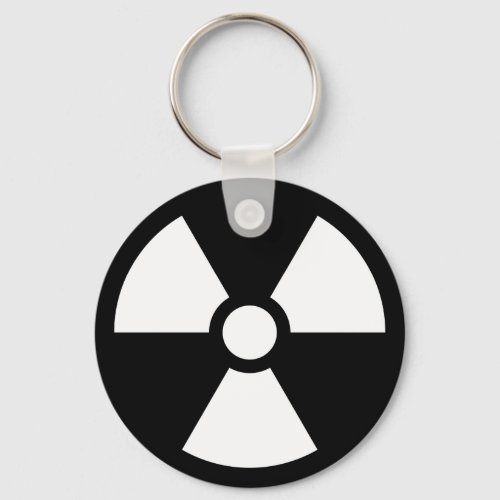Radiation Trefoil Sign Symbol Warning Sign Symbol Keychain



At the time, it was rendered as magenta, and was set on a blue background. (See right.) The modern version is black against a yellow background, and it is drawn with a central circle of radius R, an internal radius of 1.5R and an external radius of 5R for the blades, which are separated from each other by 60°. Hazard symbols are recognizable symbols designed to warn about hazardous materials or locations. The use of hazard symbols is often regulated by law and directed by standards organizations. Hazard symbols may appear with different colors, backgrounds, borders and supplemental information in order to signify the type of hazard. On February 15, 2007, the IAEA and the ISO announced this new ionizing radiation symbol to supplement the traditional trefoil symbol. The new symbol is aimed at alerting anyone, anywhere to the potential dangers of being close to a large source of ionizing radiation.[3] Experts have felt that the trefoil symbol had little intuitive value and was less likely to be recognized by those not educated in its significance. According to the IAEA, in a survey conducted at an international school, many children mistook the trefoil for a non-threatening propellor. Hence, the Agency, along with the International Organization for Standardization has devised this symbol for sealed radiation sources. It depicts, on a red background, a black colored trefoil radiating waves, a skull and crossbones, and a person running away from the scene. The radiating trefoil suggests the presence of radiation and the red background and skull and crossbones warn of the danger. More important, the person running away from the scene suggests the action of avoiding the labeled material. The symbol had been tested in countries with different population of varying groups, ages, and educational backgrounds to ensure that it clearly conveys the message “Danger- Stay awayâ€. The new symbol is to be displayed prominently on the device that actually houses the radiation sources so that if, even by mistake, someone attempts to disassemble the device it provides an explicit warning not to proceed any further...A symbol is something such as an object, picture, written word, sound, or particular mark that represents something else by association, resemblance, or convention. For example, a red octagon may be a symbol for "STOP". On maps, crossed sabers may indicate a battlefield. Numerals are symbols for numbers. All language consists of symbols. The name "Ted" is a symbol representing a person. A standards organization, standards body, standards development organization or SDO is any entity whose primary activities are developing, coordinating, promulgating, revising, amending, reissuing, interpreting, or otherwise maintaining standards that address the interests of a wide base of users outside the standards development organization. Most voluntary standards are offered for use by people, regulators, or industry. When a published standard achieves widespread acceptance and dominance it can become a broader de facto standard for an industry. This has happened with the modem protocol developed by Hayes, Apple's TrueType font standard and the PCL protocol used by Hewlett-Packard in the computer printers they produced. Normally, the term standards organization does not include the parties participating in the standards development organization in the capacity of founders, benefactors, stakeholders, members or contributors, who themselves may function as the standards organizations. In physics, radiation describes any process in which energy emitted by one body travels through a medium or through space, ultimately to be absorbed by another body. Non-physicists often associate the word with ionizing radiation (e.g., as occurring in nuclear weapons, nuclear reactors, and radioactive substances), but it can also refer to electromagnetic radiation (i.e., radio waves, infrared light, visible light, ultraviolet light, and X-rays) which can also be ionizing radiation, to acoustic radiation, or to other more obscure processes. What makes it radiation is that the energy radiates (i.e., it travels outward in straight lines in all directions) from the source. This geometry naturally leads to a system of measurements and physical units that are equally applicable to all types of radiation. Some radiations can be hazardous.


